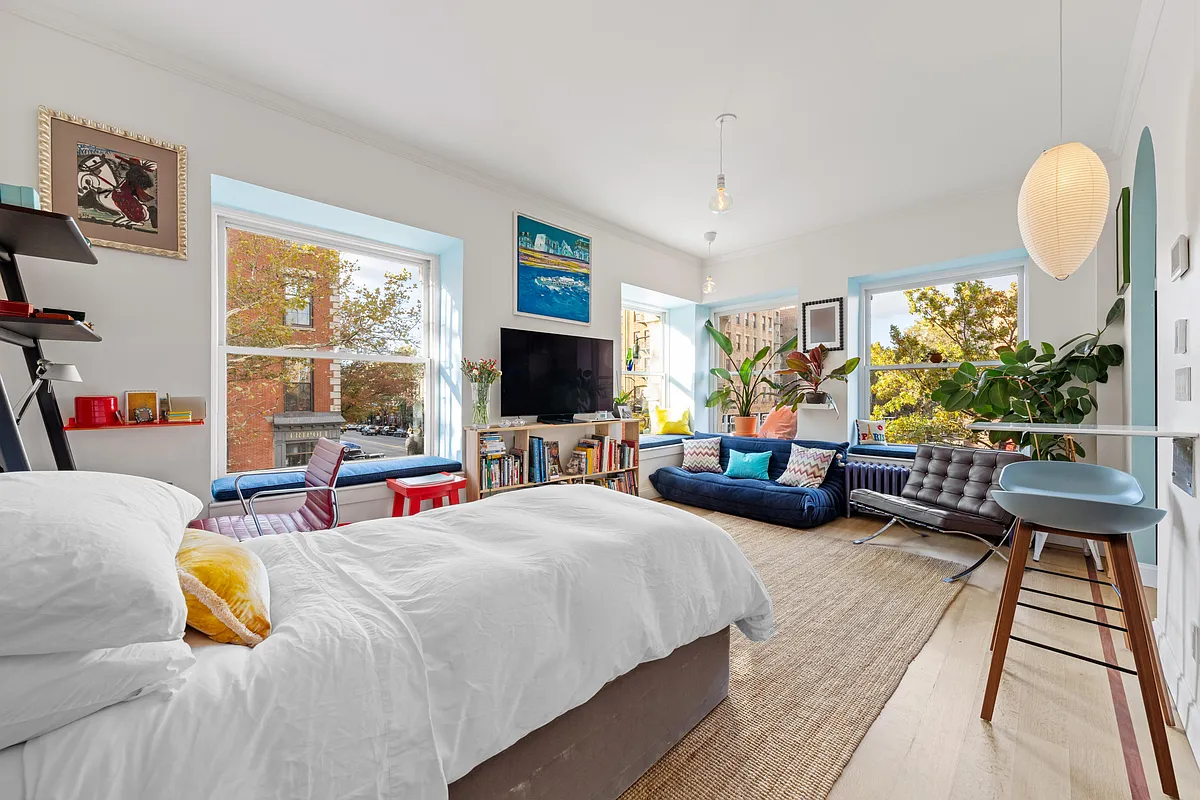News Flash: Everyone Wants to Live in the City
If you weren’t already convinced that city life is becoming increasingly preferable to suburban life, see this article in The New Republic, which looks at a trend called “demographic inversion”—a reversal of the white flight that helped hollow out the inner city beginning in the 1950s. The author quantifies what many Brooklynites already know: the…


If you weren’t already convinced that city life is becoming increasingly preferable to suburban life, see this article in The New Republic, which looks at a trend called “demographic inversion”—a reversal of the white flight that helped hollow out the inner city beginning in the 1950s. The author quantifies what many Brooklynites already know: the neighborhoods closest to vocational and cultural hubs (like, dare we say, Manhattan) and with shopping and services in walking distance are the most popular, forcing poorer folks to move further and further out. There’s been plenty of talk about the suburbs potentially turning into 21st century slums but what will 21st century cities look like if demographic inversion continues? “In the worst case, demographic inversion would result in the poor living out of sight and largely forgotten in some new kind of high-rise projects beyond the city border, with the wealthy huddled in gated enclaves in the center.”
Trading Places [The New Republic]
Beyond Gentrification [Curbed]
Photo by Daily Phototherapy.





Some people – my brother for instance – will NEVER live in a city. He likes his life in the suburbs with his yard, deck and garden, which his income would not allow in this city. It’s not for me, but my city apartment life isn’t for him either.
What, in the 70s and 80s, white flight had already occurred (the biggest shift happened in the 60s). The horrible crime in Brooklyn was in the neglected, redlined, poor minority neighborhoods – where the populace distrusted the police, and the police often did not care. Why would all of the people who have moved back leave if interest rates increase and the cost of oil goes up? So they can take out a new mortgage at a higher rate in the suburbs, pay more for transportation costs, sell their Brooklyn property for a loss? That makes no sense. I really don’t understand your comments sometimes. Things will be difficult as this recession progresses, but those hit the hardest will not be all of the brownstone property owners and live in landlords, but the lowest on the economic rungs, and the middle class workers who lose jobs but don’t have easily transferable skills or assets and family to rely upon. Why wish them ill?
BxGrl – given all the items you mentioned I am not sure what a ‘free market’ even looks like anymore – but considering that NYC had a pretty diverse population (by income) for most of its history and no rent controls – what makes you think that market forces could not permit the same to again take place?
As for what is “fair” – obviously unwinding all the Govt intervention can result in windfalls for LL and increasing Govt intervention can result in ‘windfalls’ (at LL expense) for tenants – but on a macro level – why should property owners be individually responsible to subsidize (worthy) societal issues? Shouldn’t such issues (like lagging incomes) be addressed by all?
Polemicist is just wrong about the effect of rent control.
The only way rent controls can inhibit new building or renovation is if new housing stock is subject to rent regulation. That hasn’t been the law in NYC for half a century and no one is talking about changing this basic rule. New building and new capital improvements are always permitted to charge full market rate.
NYC rent rules, including the proposals to reduce vacancy decontrol, apply only to EXISTING housing stock. They may provide some incentive to convert rental to condo/coop, but they have no effect on the overall quantity of housing available.
What they do do is to reduce the windfall profits to existing landlords who seek to profit from high demand without providing any new service. This should reduce, at least at the margin, both rents and purchase prices for existing housing.
If the market has failed to produce enough rental housing for middle class families, it is because the market is not efficient enough to produce a product that people want at a price they can afford, given the competition from the heavily subsidized suburbs.
The suburbs may be less attractive, but suburban living and home ownership continue to be heavily subsidized through the mortgage interest deduction, cheap oil, highway subsidies, wars in the Middle East, free pollution rights, school finance rules that allow self-segregation to avoid paying for more expensive education, and so on. In a fairer market system, in which citizens had to pay the cost of pollution, education and transportation even in the suburbs, we’d have much denser cities and far less sprawl. And more middle class rental housing on the edges of the cities. Rent control would have little or no effect on changes in NEW housing, but would slow down the transition to rich-in-the-center and poor-on-the-periphery in existing stock.
I always wondered what the best term for the “opposite of white flight” would be. Gentrification is much better. the New Republic isn’t exactly a must read periodical.
I don’t see why anyone wouldn’t live in a city – the benefits are incomparable.
Looks to me that even during the years of the Great Depression, NYC gained huge numbers.
How do you explain that, The What?
1842;
Again, I’m with you. I think one of the reasons for NY’s current dynamism is that we have industrious immigrants coming in, and they will move up the economic ladder.
I think the first step to solving a problem is recognizing it, and that is why I have some hope with Governor Paterson’s recent talk about the flight of the middle class(again, whether he actually does something is another story). NY has to realize that government interference in the housing marketplace, no matter how well intentioned, will create distortions, as we’ve discussed.
I think another factor that has to change is on a cultural level. The folks I’m talking about do shop in Sam’s Club, they eat in Applebee’s,etc. For too long NYC was dominated by Manhattan elites who saw this type of activity as abhorent, and some of that creeps into commentary on Brownstoner. I think this is changing, however. Look at the success of IKEA, a place where people from all strata of Brooklyn (and Manhattan) meet.
All in all, I think the city is moving in the right direction,but there are always challenges, as we’ve discussed.
“Isn’t it unconstitutional to take property rights from private landlords in the name of “rent control” or “rent stabilization”?”
Just as “unconstitutional” as it is to have taxpayers subsidize developers with abatements, BID’s and 421-a’s without expecting something in return. Is it fair to allow developers to abuse eminent domain and not give back? (Don’t mention Ratner- his promise of affordable housing is not guaranteed to be built, built on site or be affordable to those who truly need it- and to me that doesn’t include people making 100,000 a year).
According to this, The What…it would not indicate that everyone left New York in the 1970’s and 80’s. It looks like about 10% of the population left and has since gained back those residents and then some:
History of New York Population
1790 33,131
—
1800 60,515 82.7%
1810 96,373 59.3%
1820 123,706 28.4%
1830 202,589 63.8%
1840 312,710 54.4%
1850 696,490 122.7%
1860 813,669 16.8%
1870 942,292 15.8%
1880 1,206,299 28%
1890 1,515,301 25.6%
1900 3,437,202 126.8%
1910 4,766,883 38.7%
1920 5,620,048 17.9%
1930 6,930,446 23.3%
1940 7,454,995 7.6%
1950 7,891,957 5.9%
1960 7,781,984 −1.4%
1970 7,894,862 1.5%
1980 7,071,639 −10.4%
1990 7,322,564 3.5%
2000 8,008,288 9.4%
(Estimated 2006 population 8.25 million)